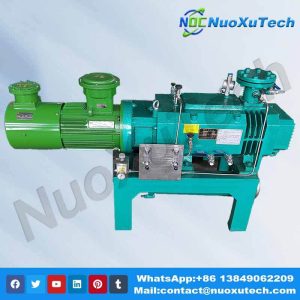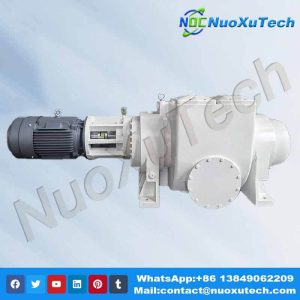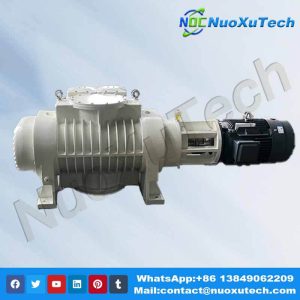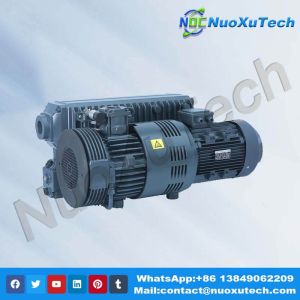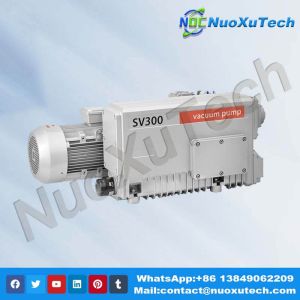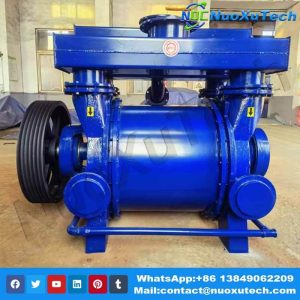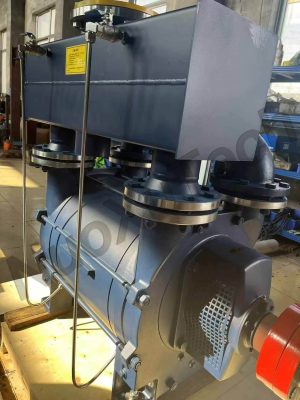When designing vacuum systems, understanding the various vacuum flange standards is crucial. Three common types are CF, KF, and ISO flanges, each with unique structures, applications, and standards. This article aims to clarify the differences and connections between these flanges to aid in your vacuum system design.
1. CF Flanges

CF Flanges, short for Conflat Flanges, are used in ultra-high vacuum (UHV) applications. These flanges feature a metal seal capable of withstanding high-temperature baking, making them ideal for stringent vacuum requirements.
Specifications:
- Nominal Diameter Sizes: DN16, 40, 63, 100, 160, 200, 250
- Maximum Vacuum: Up to 10^-12 mbar (convert to Pa using online tools if needed)
- Seal Materials: Viton, PTFE, oxygen-free copper, etc.
- Flange Materials: Typically made from 304 or 316 stainless steel
Components:
- Flange
- Metal seal (e.g., oxygen-free copper gasket)
- Fasteners
Usage:
- Ideal for ultra-high vacuum systems
- Commonly used in scientific research, semiconductor manufacturing, and other high-vacuum applications
2. ISO-KF Flanges

ISO-KF Flanges are quick-release flanges used in vacuum systems. They consist of paired KF flanges, an O-ring, a centering ring, and a clamp. These flanges are easy to assemble and disassemble by hand without tools.
Specifications:
- Nominal Diameter Sizes: DN10, 16, 25, 40, 50
- Manufacturing Standards: DIN 28403, ISO 2861
- Maximum Vacuum: Up to 10^-8 mbar
- Seal Materials: Viton, Buna, Silicone, EPDM, aluminum, etc.
- Flange Materials: Typically made from 304 or 316 stainless steel
Components:
- Flange
- O-ring
- Centering ring
- Clamp
Usage:
- Suitable for small-sized vacuum applications
- Commonly used in laboratory settings and small vacuum systems
3. ISO Vacuum Flange Standards
ISO Flanges are versatile and can be used in applications ranging from atmospheric pressure to high vacuum. They are suitable for systems requiring frequent assembly and disassembly, especially for pipes larger than 50mm in diameter.
Types and Specifications:

- ISO-K Vacuum Flanges:
- Nominal Diameter Sizes: DN63, 100, 160, 200, 250, 320, 400, 500, 630
- Manufacturing Standards: DIN 28404, ISO 1609
- Maximum Vacuum: Up to 10^-8 mbar
- Seal Materials: Viton, Buna, Silicone, EPDM, aluminum wire, etc.
- Flange Materials: Typically made from 304 or 316 stainless steel
- Components: Flange, clamp, O-ring, centering ring
- ISO-F Vacuum Flanges:
- Nominal Diameter Sizes: DN63, 100, 160, 200, 250, 320, 400, 500, 630
- Manufacturing Standards: DIN 28404, ISO 1609
- Maximum Vacuum: Up to 10^-8 mbar
- Seal Materials: Viton, Buna, Silicone, EPDM, aluminum wire, etc.
- Flange Materials: Typically made from 304 or 316 stainless steel
- Components: Flange, O-ring, centering ring, bolts (for securing)

Usage:
- Suitable for larger vacuum systems
- Commonly used in industrial and research applications
By understanding the distinct features and applications of CF, KF, and ISO flanges, industries can make informed decisions to optimize their vacuum systems. NuoXuTech offers a wide range of high-quality vacuum products tailored to meet specific needs.
Contact Us
For more information, Contact Nuoxutech
Mail: contact@nuoxutech.com
WhatsApp: +86 13849062209
Blogger: nuoxutech.blogspot.com
Our team is ready to provide you with professional service and support.
Keywords
vacuum flanges, Vacuum Flange Standards, CF flanges, KF flanges, ISO flanges, KF vs CF vs ISO Vacuum Flanges, industrial vacuum solutions, NuoXuTech, Vacuum Fittings Standard Comparison, What are the differences between KF, CF, ISO vacuum flange standards, CF flanges vs ISO flanges: advantages and applications, Which vacuum flange type is right for your vacuum system.

